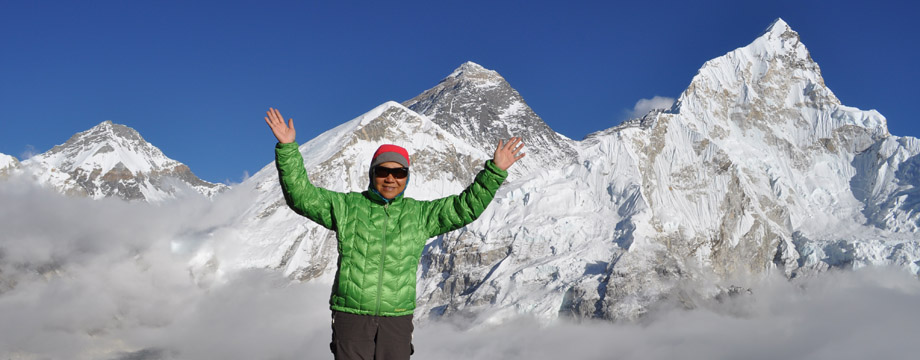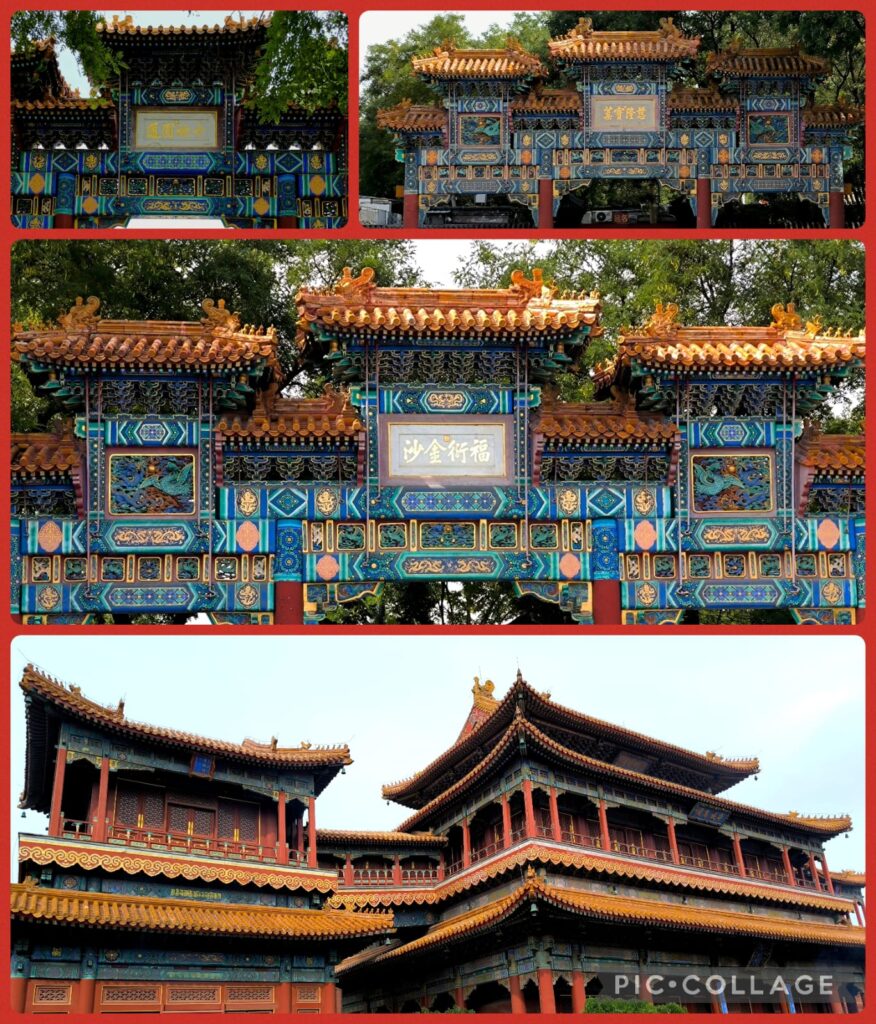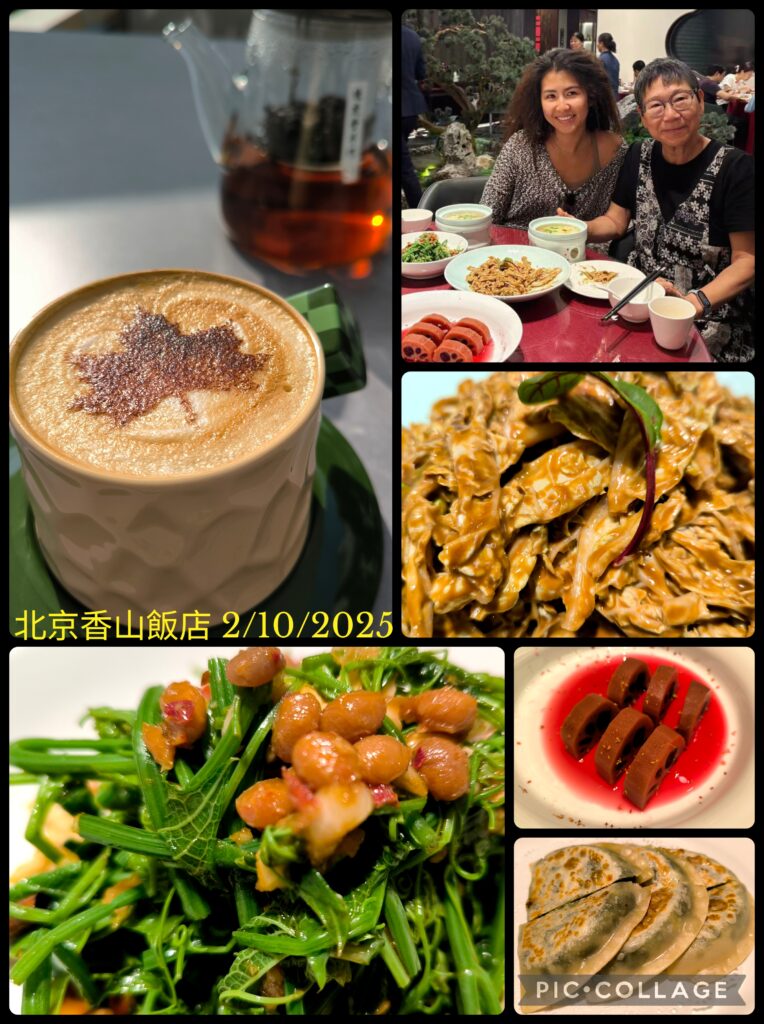I love autumn foliage. In August, I joined a Hong Kong tour to visit Northeast China from 26/9-3/10/25. The tour was canceled. As a result, I decided to spend five days in Tian Zhen Yuan 天真園 (TZY) to experience the Tai Chi 太極culture and two days with friends in Beijing.
26-30/9/2025 Tian Zhen Yuan Tianjin 天津
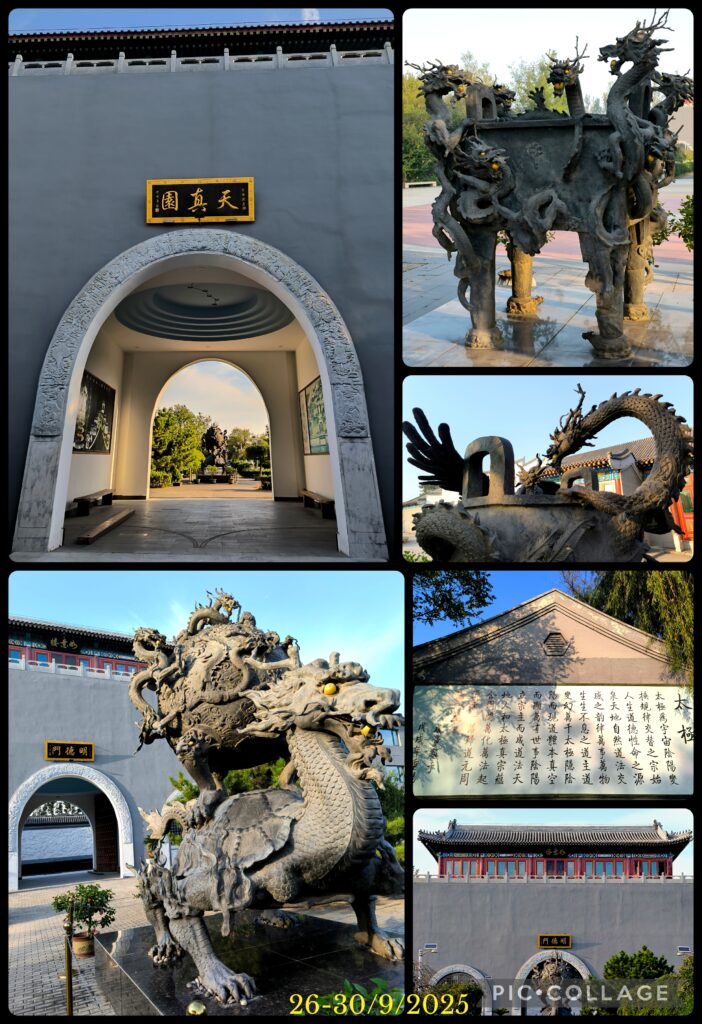
Catherine and I departed Hong Kong at 10:20 am and arrived at Beijing Tai Hing Airport around noon. A driver from TZY met us on arrival and we arrived at the centre before 3 pm. TZY is an institution dedicated to manifestation, propagation and education of traditional Chinese culture rooted in the Tai Chi philosophy. It was co-founded in 2001 by Xing Qiling and Cui Ailing, the fourth-generation successors of Li’s Tai Chi. Located in Chengquan Town, Wuqing District, TZY covers an area of 180 acres. The architectural layout is based on the Neijing diagram of the Yellow Emperor’s Classic of Internal Medicine. As a national intangible cultural heritage project, TZY has established a five-in-one teaching system of “civil, martial, medical, agricultural and art”. It also carries out diversified courses such Tai Chi martial arts, Chinese medicine health preservation, calligraphy, and painting art. Catherine who has problems with her legs and difficulties in walking, has highly recommended the treatment she had during her brief stay in July. I am curious and hope the treatment could help my hip problem.
On arrival we met two instructors: Miss Lau, a volunteer from Hong Kong who has been staying in TZY since 2019, and Mr Wang. Miss Lau showed us around for an hour and a half before dinner. We followed a structured routine in TZY: exercise at 6:30am with Miss Lau; breakfast at 7:30pm; two lessons starting at 10:20am; lunch at noon; two lessons at 2 pm; treatment at 4-6pm and dinner at 6 pm. I had an enjoyable full schedule for four days.
Tai Chi martial art 太極拳. Catherine and I had a total of six sessions with Miss Lau. We took the first stage of the foundation course that comprises three stages. We learned and practised four simple movements. I hope to complete the foundation course on my next visit to TZY probably early next year if possible.
Tai Chi Movements with Ruler / Stick 太極尺and Balls 太極球. Mr Wang taught us basic walking movements, how to practise with a Tai Chi ruler that can also be used for massage purpose as well. We played with three types of balls: a medium-sized Tai Chi wooden ball and a small ball with our hands, and a football with our feet. All these movements would help coordination, concentration, flexibility resulting in improvements of the functioning of internal organs and chi circulations. I am clumsy and inflexible!
Tai Chi Scent Making. We had three sessions with Miss Lau on scent making using different techniques. Though clumsy, I was able to accomplish the assignment creating different shapes of scent. An engaging experience!
Tai Chi Tea Tasting. I had a tea session on 30/9 with Mr Wang after Catherine had left. Cherie who comes from Hong Kong,joined. Wang prepared tea and applied energy to the tea when blessing it. It was interesting to watch his hand movements and the tea tasted different each time. Cherie and I also applied our energy following his instructions. Mr Wang then shared the taste he experienced from the tea from me and Cherie. An amazing experience!
Treatment
I have both hip and knee problems. So I had four treatments with Dr Lee who is a qualified doctor specialized in heart disease before taking up Chinese medicine. Then she came to TZY four years ago and now applies Tai Chi and classic internal medicine approach to treatment. According to her diagnosis, my body is “cold and wet” thus preventing proper circulation. I showed her x-ray of hip bones. She believes treatment using internal Chinese medicine (such as artemisia argyi – silvery wormwood or Chinese mugwort), and skills including gua sha (scraping therapy), massage 推拿, acupuncture 針炙etc could improve overall circulation, muscles etc could help instead of going for hip replacement. Dr Lee applied Chinese mugwort 艾草and thorough massage with a ginger cream for four days on my back, tummy, hip, leg and feet. She also applied scraping therapy刮痧 on my back and side of my right leg with more serious hip problem. I indeed felt better after treatment.
Beijing 30/9 – 3/10
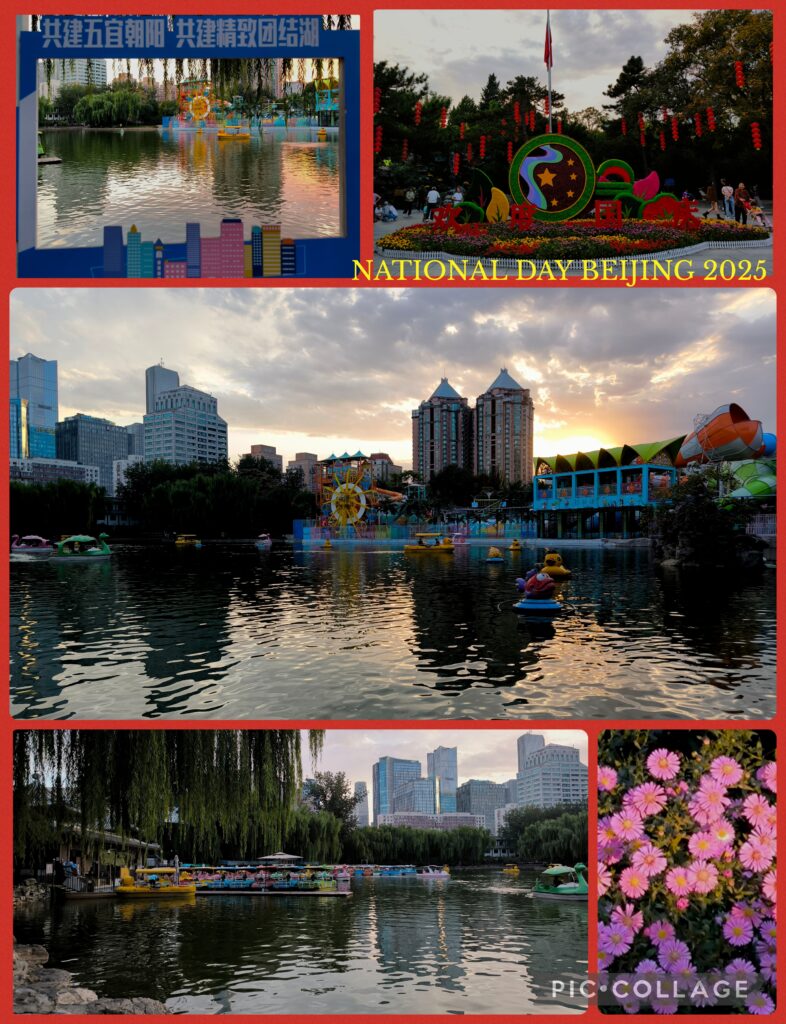
30/9. After having lunch at TZY, I had a comfortable ride to Beijing. This time, I chose a hotel next to the Tuanjie Lake 團結湖station close to Sanlitun 三里屯 close to the second ring road. After relaxing for a few hours, I had a leisure walk through the Tuanjie Lake Park. I had a wonderful dinner with Qiao whom I have known for some 20 years. We last met in Zhuhai before Covid and were happy to catch up.
1/10 National Day. I decided to revisit Yonghe Temple 雍和宮. As it was the National Day and a public holiday, there was not much traffic on the second ring road. Instead of taking the metro, I took a taxi instead. The comfortable short ride only cost RMB20. The temple had lots of people but not over-crowded.
Located at the northeast corner of Beijing City, Yonghe Temple is considered the largest and most perfectly preserved lamasery in China. It was built initially in 1694 as the residence of Emperor Yongzheng (1678-1735) when he was a prince who reigned as the fourth Qing emperor from 1722 to 1735. In 1744 the Qing Dynasty formally changed the status of the residence to that of a lamasery which has since become the national centre of Lama administration.

The architecture and art work of the temple is unique with a combination of Han Chinese and Tibetan styles. Arranged along a north-south central axis, it has a length of 480m covering an area of 66,400 sq metres. The memorial gateways, red walls and stone lions are symbols showing its origin as the dwelling of an Imperial Family member. It has three prominent Paifangs 牌樓 namely Zhaotai Gate the main gate with three archways, Yonghe Gate (Gate of Clarity and Prosperity) and five main halls separated by courtyards in addition to the common temple features such as a Drum Tower on the western side and a Bell tower on the eastern side. In front of these towers are two octagonal Stele Pavilions with words by Emperor Qianlong carved in the stele explaining the traditional and historical reasons for changing the dwellings into a lama temple. An ancient copper cooking vessel standing on a white marble stone made in 1747 has high artistic value is said to be among ‘the three rarest things in Beijing’.
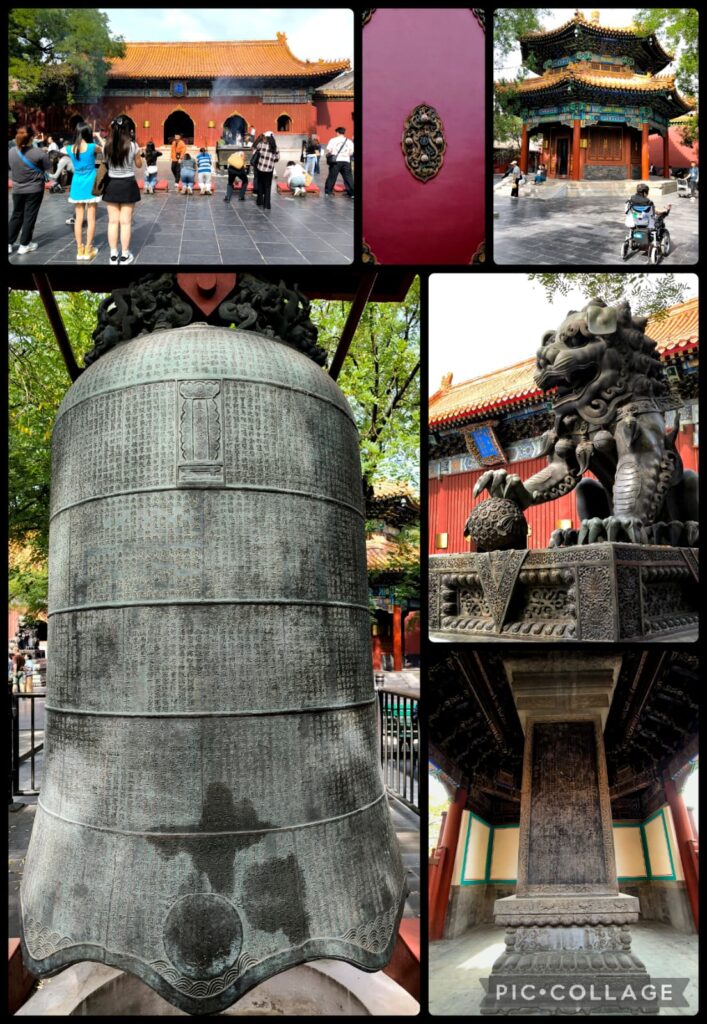
Among the dozen halls, the most prominent five main halls are-
Hall of the Heavenly Kings 天王殿 (Tianwangdian) with the statues of four Heavenly Kings located on both sides of the inner palace walls and a smiling Maitreya Buddha in the centre.
Hall of Harmony and Peace 雍和宫(Yonghegong) (the main building of the temple) with three bronze Buddhas of Three Ages – Sakyamuni (the Present) in the middle, Dipankara (the Past) on the right and Maitreya (the Future) on the left and 18 Arhats on three sides.
Hall of Everlasting Protection永佑殿 (Yongyoudian) (formerly the Emperor’s living quarters and where his coffin was placed after his death) with a statue of Bhaisajya Buddha where sacrificial offerings are made to it.
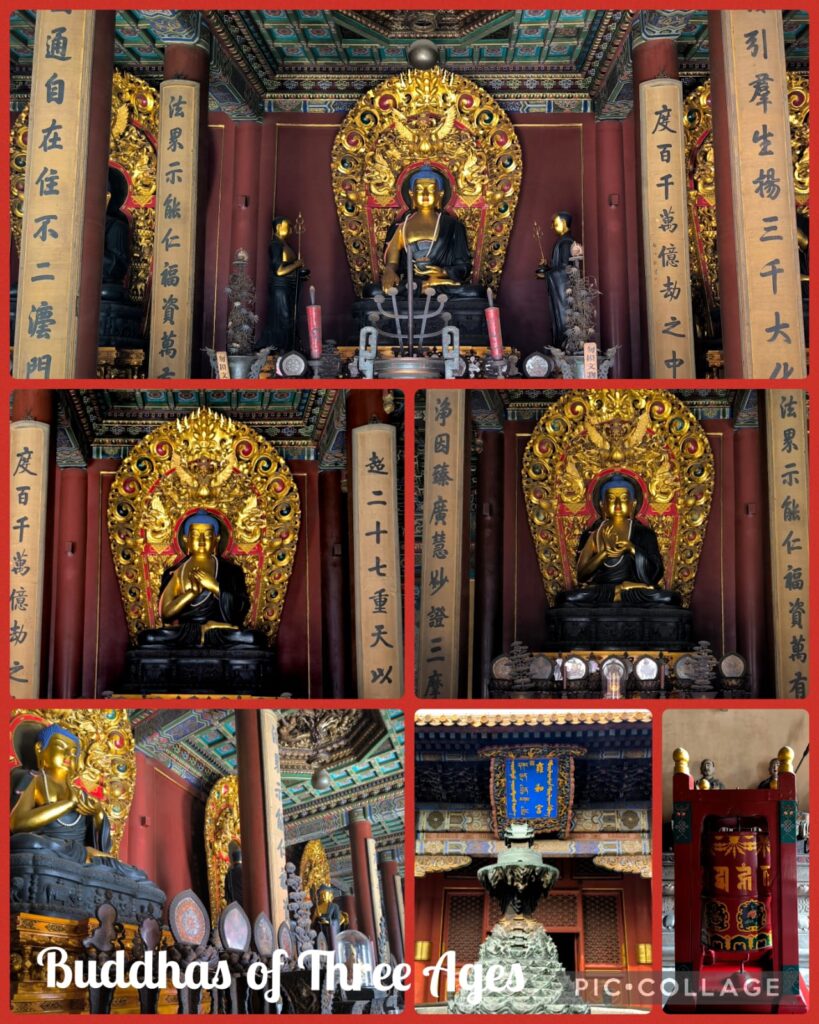
Hall of the Wheel of the Law 法輪殿 (Falundian) (formerly the dwelling of the Emperor’s wives) with a large statue of Tsong Kha-pa, founder of the Geluk School of Tibetan Buddhism and the Five-Hundred- Arhat-Hill, a carving made of red sandalwood with statues of the Arhats made from five different metals (gold, silver, copper, iron, and tin). The structure contains the architectural styles of both Tibetan and Han Nationalities. It now functions as a place for reading scriptures and conducting religious ceremonies.
Hall of Boundless Happiness 萬福閣 (Wanfuge) with an 26-metre tall statute of Maitreya Buddha carved from a single piece of white sandalwood and placed on a white marble base (18m above ground and 8 metre underground). This was a gift from the seventh Dalai Lama to Emperor Qianlong. Tens of thousands of Buddhas are also displayed along every level.
The bronze statues of the Buddhas of the Three Ages, the Five-Hundred-Arhat-Hill and the white sandalwood statue of Maitreya Buddha are the three fabulous artworks of the temple. I am glad that after pursuing two Buddhist courses during the Covid period and have taken refuge since 2023, I now have more understanding about Buddhism as a whole and the three traditions of Buddhism. Hence, I can better appreciate the history, symbols, structure, layout and architecture, as well as the underlying meanings and significance of this unique temple. But there was simply too much to see and absorb. I was surprised to find many young worshipers in the crowd.
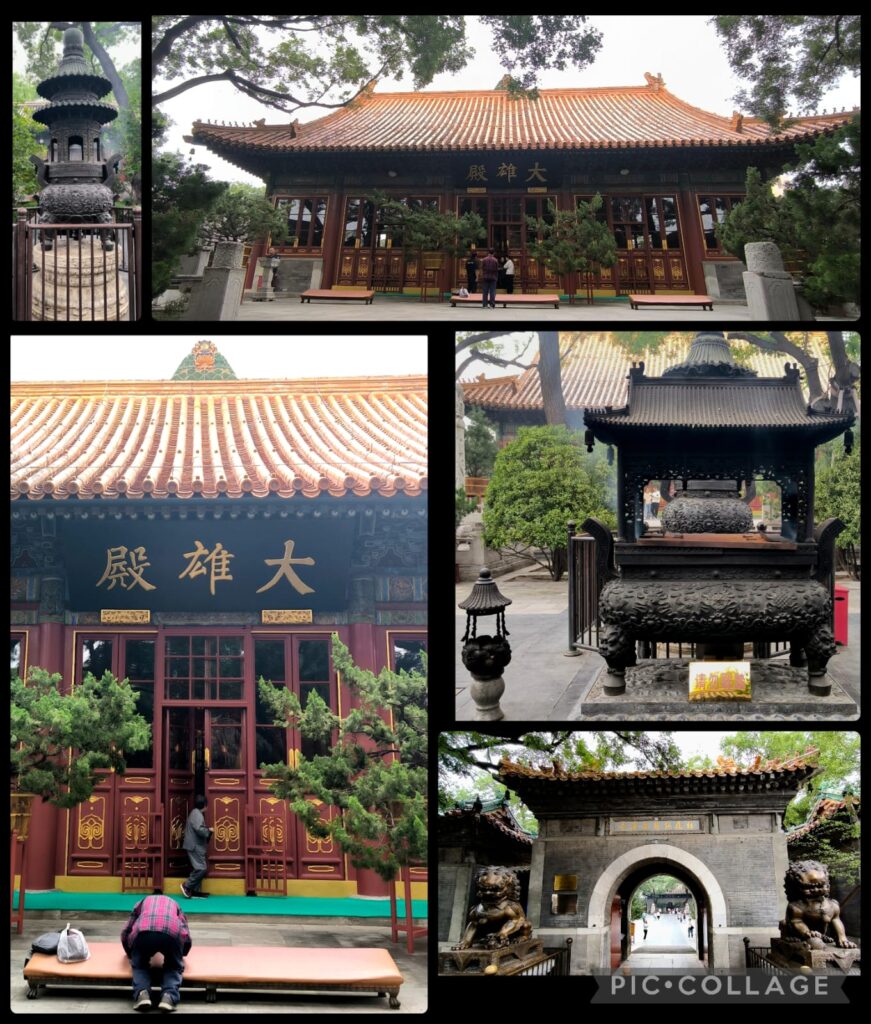
After having spent two hours in Yonghe Temple, I left after 2 pm skipping lunch and taking a bus direct to Guanji Temple 廣濟寺 in Xicheng District. I had a most wonderful ride along Changan Street passing by Tiananmen and Beihai Park and watching lots of local people on the street. Quite a festival atmosphere! Guanji Temple was originally built in the Jin dynasty (1115-1234 CE). But the present temple was completed during the Ming dynasty (1368-1644). it is the headquarters of the Buddhist Association of China founded by Master Xuyun (1840?-1959)who is the father of modern Buddhism. My friend Qiao highly recommended me to visit this temple. When I arrived around 3:15 pm, I saw a queue outside the main hall and was told to stand in the queue. I hesitated as I intended to explore the temple first. A few elderly ladies told me to stay in order to keep my place. Later on I knew what they meant: there was only a limited number of worshipers that could be admitted to join the monks for the evening practice. They helped me to download the sutras from internet. The monks led the chanting for almost 45 minutes. I managed to followed without problem: the procedures were similar to those I followed in Hong Kong. But the sutra reading part was much longer. To be able to joint the evening practice with senior monks of the temple was a blessing. As soon as the practice was over, we had to leave the temple. All visitors were out by 4:30pm. What a special experience!
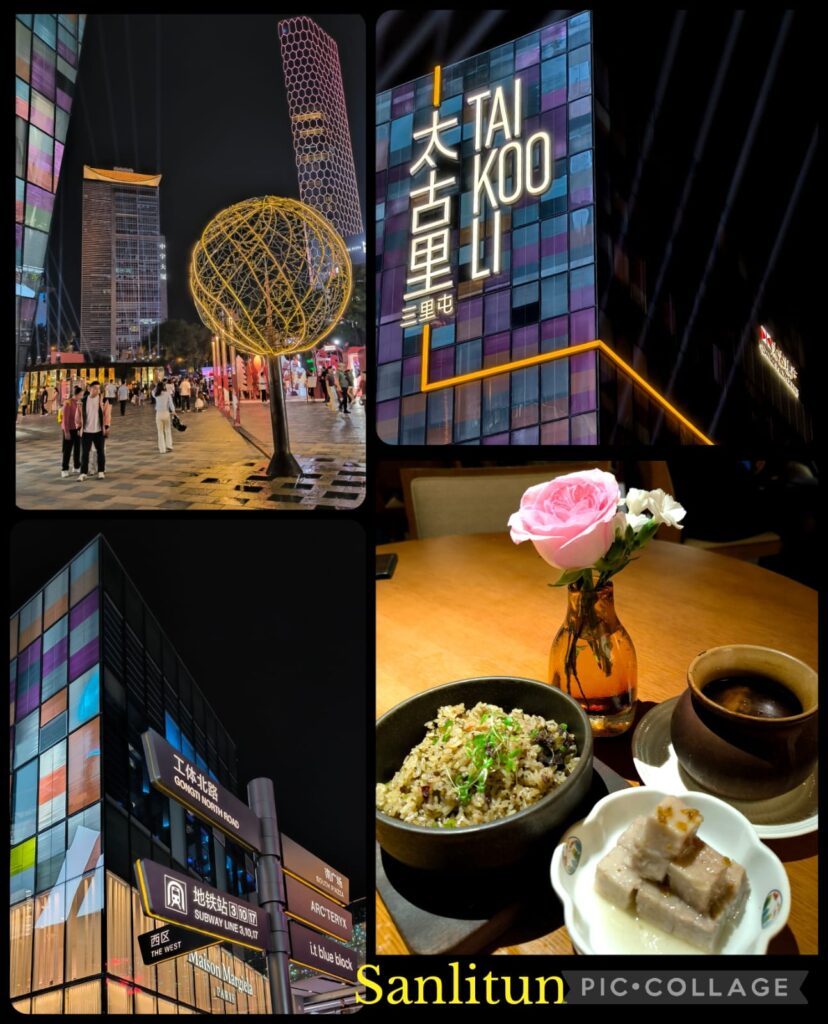
I headed straight to Sanlitun and went to a highly recommended vegetarian restaurant Qing Chun Perma 慶春撲門for dinner. I had a special soup and black truffle fried rice for dinner. This delicious dinner only cost me over RMB100. Incredible!
I strolled around Taikoo Li Sanlitun, a shopping centre developed by Hong Kong’s Swire Properties. It comprises 19 modern buildings on two sites with upscale designer shops and eateries blending with art, music, culture, fashion, F&B and shopping. I saw young people enjoying themselves! I walked back to my hotel exhausted and had a good sleep.
2/10. I had a relaxing day meeting with Wendi and Qiao. Wendi, a young lady from Beijing who took the HKU Master of Buddhist Counselling course in 2022-23, returned to Beijing last year. I contacted her and we were able to meet up. She lives not far from Fragrant Hill. So we decided to have lunch at Fragrant Hill Hotel 香山飯店 followed by tea in the garden in the afternoon. Wendi is an intelligent and well-travelled lady in her 20s. We had a great time catching up.

I returned to Beijing and had a vegetarian hot-pot dinner in Tibetan style with Qiao not far from the hotel. Another wonderful experience!
3/10. I took a local train shortly before 9:30 am before switching to the Tai Hing airport express (40 RMB). The whole journey took just over an hour. Very efficient. I had to spend some four hours at the airport before the flight took off. I had a pleasant flight and landed in Hong Kong around 6pm.
Remarks (to add)

